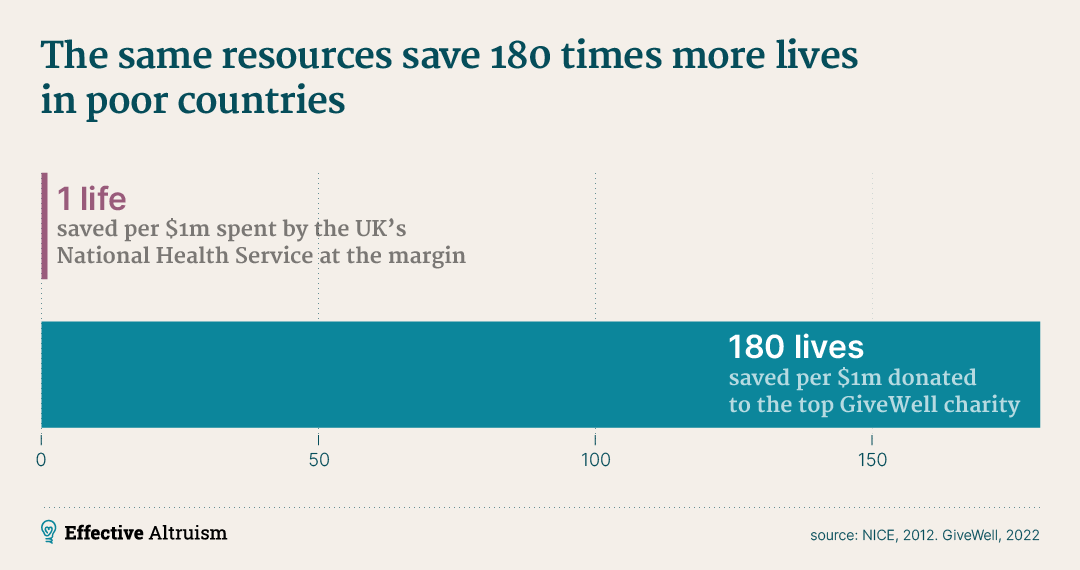Work on global health and development can involve improving public health, reducing poverty, or increasing economic growth, especially in low-income countries, where these issues tend to be most pressing.
In 2013, roughly 767 million people lived on less than the equivalent of $1.90 per day, adjusted for purchasing power.[1] Lack of economic resources directly affects many aspects of people’s lives, including access to education and healthcare. Poverty and poor health also seriously hinder the wellbeing of millions of people. This is why economic poverty and the global burden of disease are important focus areas for effective altruism.
As a result of widening global inequality, the cost of averting death is much lower in low-income countries. For instance, GiveWell estimates the cost per child life saved through a bed-net distribution funded by the Against Malaria Foundation at about $5,500.[2] By contrast, the British National Health Service considers it cost-effective to spend £25,000-£37,000 for a year of healthy life saved.[3] This means that donations to charities working on global poverty and health can be very cost-effective.

Global inequality also affects the impact of cash transfers: given the extent of global inequality, a dollar is worth 66 times as much to a person living in extreme poverty as to the average American.[4]
Some worry that employing aid to tackle these issues is problematic. People in effective altruism have sought to address several of these concerns, including worries about aid effectiveness and aid and paternalism.
See here for a list of organizations working on global health and development.


